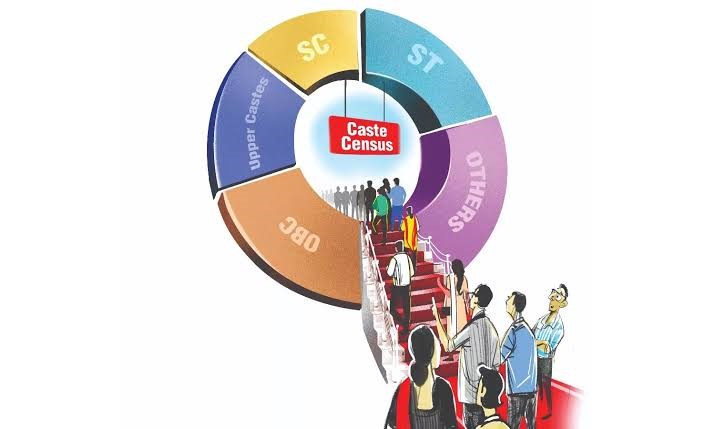WHY INDIA NEEDS CASTE CENSUS
Syllabus:
GS-2:
- Government policies and interventions
- Vulnerable section of the society
Why in the News?
The government’s plan to include caste enumeration in the next Census has reignited debates around social justice, data-driven policies, and inclusive governance in India.

HISTORICAL DENIAL AND DATA GAP
- Contradictory start: Post-independence India abolished caste in principle but used it in reservations, creating a policy contradiction without supporting empirical data.
- Invisible reality: Denying caste enumeration led to policy blindness, making the socio-economic condition of most backward communities statistically invisible.
- Judicial endorsement: The Supreme Court has repeatedly validated caste as a proxy for backwardness, despite the Constitution using the term ‘classes’.
- Ambedkar’s foresight: Ambedkar condemned omitting caste in 1951 Census, calling it short-sighted, as visibility is essential for inclusion and justice.
- Dominance unchecked: Lack of data allowed upper castes and elite OBCs to retain disproportionate power, representation, and resources across sectors.
LEGAL AND POLICY IMPERATIVES
- Partial inclusion: While SCs/STs are counted, OBCs remain excluded, creating gaps in policy execution and social classification systems.
- Constitutional amendments: 73rd and 74th Amendments made OBC reservation mandatory in local bodies, requiring reliable local data.
- New category: EWS quota introduced for non-backward upper castes increased demand for accurate caste-wise socio-economic data.
- Policy inconsistency: Without data, reservation policies are vulnerable to arbitrariness and manipulated by populist politics.
- Unequal benefits: Rohini Commission found elite OBC castes took most benefits, while others remained excluded due to lack of visibility.
ADMINISTRATIVE NEED FOR ENUMERATION
- Correct targeting: Disaggregated data prevents elite capture of quotas and helps ensure true beneficiaries are identified.
- Refined subgroups: Allows sub-categorization within OBCs and other groups, enabling more just representation and resource allocation.
- Valid evidence: Helps evaluate demands of dominant groups like Marathas and Jats by testing actual socio-economic deprivation.
- Beyond Census: Universal enumeration will ensure caste gets included in NSSO and NFHS, ensuring regular data flow.
- Integrated planning: Eliminating partial enumeration aligns policies across Ministries, boosting welfare efficiency and planning.
FAILURE OF SECC 2011
- Legal vacuum: SECC 2011 wasn’t under the Census Act, limiting its authority and data usability.
- Wrong agency: SECC was handled by non-expert ministries, lacking required anthropological expertise and understanding.
- Flawed design: Open-ended questions created confusion; caste, clan, gotra, and surname were often interchanged.
- Absurd results: SECC listed 46 lakh castes, proving data was unsorted, inconsistent, and unusable.
- Wasted chance: It was either sabotaged or mismanaged, setting back India’s social justice mapping.
SUCCESS STORY FROM BIHAR
- Pre-approved list: Used 214 recognized caste names with one “Other Castes” category, ensuring structured responses and clarity.
- Flexible design: “Other Castes” option allowed inclusion without causing duplication, boosting data reliability.
- Efficient execution: Bihar demonstrated that with proper planning, caste enumeration can be accurate and effective.
- Empirical proof: The survey proved that scientific data collection on caste is possible and replicable.
- Model potential: Bihar now serves as a replicable blueprint for national-level caste surveys.
A BLUEPRINT FOR FUTURE CENSUS
- Statutory backing: Amend the Census Act, 1948 to legally mandate universal caste enumeration.
- Expert-led process: Assign to the Registrar General, ensuring professional oversight and consistency.
- Standard questionnaire: Use closed-ended caste options, reducing confusion and recording errors.
- Digital coding: Introduce caste codes to handle name variants and prevent duplication.
- Inclusive approach: Collaborate with states, sociologists, and communities to finalize caste lists.
EXECUTION STRATEGY FOR CASTE COUNT
- Intensive training: Train enumerators using local case studies and a standardised instruction manual.
- Tech deployment: Use tablets with preloaded caste options, ensuring real-time data validation.
- Diverse workforce: Recruit representative enumerators from various communities to enhance trust and transparency.
- Audit mechanism: District committees should randomly verify data to check accuracy and resolve disputes.
- Pilot rollout: Conduct trials in states like UP, Gujarat, TN, Assam before full-scale launch.
SIGNIFICANCE FOR SOCIAL JUSTICE
- Focused benefits: Data ensures that schemes and quotas reach real deprived communities, not just vocal elites.
- Identifying gaps: Reveals inter-caste disparities in education, health, and income, facilitating policy corrections.
- Custom solutions: Enables region-specific schemes tailored to local caste realities and needs.
- Monitor mobility: Periodic data tracks upward mobility or stagnation of castes, informing revised inclusion norms.
- Visibility gains: Unrecognized and minor castes gain state recognition, enabling institutional redress of exclusion.
CONCLUSION
A caste census isn’t about reinforcing divisions but about illuminating inequalities for effective redress. Only by knowing who we are can we build a just, inclusive, and representative India. It’s time we count caste to discount caste.
UPSC MAINS PRACTICE QUESTION
Q. Discuss the importance of a caste-based census in ensuring inclusive governance in India. What legal, administrative, and social measures are needed to implement it effectively?





